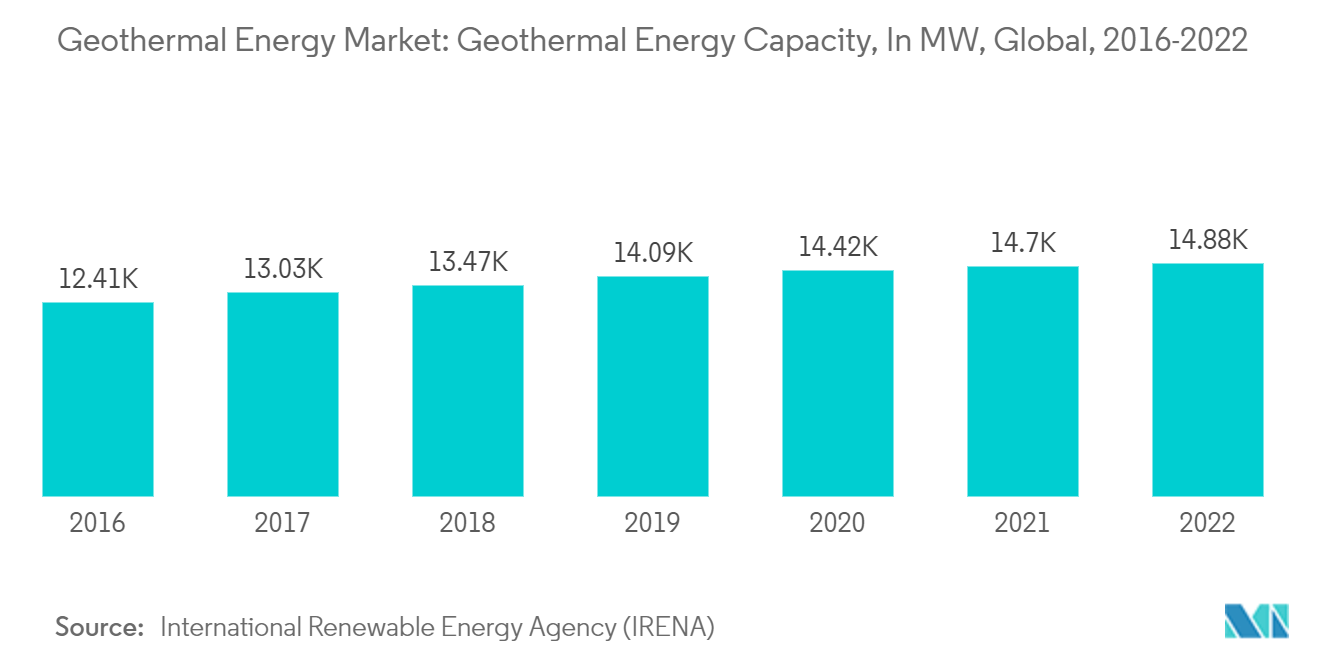Market Trends of Geothermal Energy Industry
The Binary Cycle Power Plants Segment is Expected to Witness Significant Growth
- In binary cycle power plants, the water or steam below the earth never comes in direct contact with the turbines. Instead, water from geothermal reservoirs is pumped through a heat exchanger where it heats a second liquid-like isobutene (which boils at a lower temperature than water).
- This second liquid is heated into steam, which powers the generator's turbines. The hot water from the earth is recycled into the earth through the injection well, and the second liquid is recycled through the turbine and back into the heat exchanger, where it can be used again.
- Dry-steam and flash plants, which require rarer, high-temperature, shallow reservoirs, produce higher power output and are more economically efficient than binary plants. However, they offer more options for suitable locations because binary plants can operate at reservoirs with lower temperatures.
- Many new installations have been announced in recent years, which may support the growth of the geothermal energy market during the forecast period. For instance, in February 2021, Turboden SpA, a group company of Mitsubishi Heavy Industries Ltd (MHI) and Mitsubishi Power Ltd, jointly announced that it had received an order for 29 megawatts (MW) binary cycle power generation equipment to be installed at the geothermal power plant operated in Palawan, in the Philippines, by Energy Development Corporation (EDC).
- Similarly, In January 2023, AP Renewable Inc. announced a groundbreaking ceremony to indicate the beginning of the 17-MW binary geothermal project's construction in the Tiwi geothermal site in the Philippines. The project will extract recoverable heat from geothermal brine to produce 17 MW of electricity, and this facility is expected to be completed by the end of 2023.
- In 2022, the total geothermal energy installed capacity globally was around 14,877 MW in 2022, increasing from 14,696 MW in 2021. The capacity is increasing significantly across the world.
- Therefore, based on the abovementioned factors and recent developments, the binary cycle power plants segment is expected to grow significantly during the forecast period.

North America is Expected to Dominate the Market
- North America is one of the leading markets for geothermal energy worldwide, with the United States leading the regional and global markets regarding installed capacity. In 2020, geothermal power plants produced about 17 billion kilowatt-hours (kWh), up to 0.4% of US utility-scale electricity generation.
- Most of the geothermal power plants in the United States are in the western states and the island state of Hawaii, where geothermal energy resources are close to the Earth's surface. California generates the most electricity from geothermal energy, whereas Northern California's Geysers dry steam reservoir is the world's largest known dry steam field.
- According to the IRENA, the total geothermal installed capacity was around 3,712 MW in 2022, increased from 3,656 MW in 2021. The countries such as the United States, Canada, and Mexico are increasing the capacities of geothermal energy.
- Moreover, new projects are also planned in the region, which is expected to support the region's market growth. For example, in March 2023, The government in Mexico announced a new exploratory project under CFE through a tender called 'Acquisition of Geothermal Well Drilling Services.' This project will consider 6 geothermal wells in four areas in Mexico. These tenders focus on contracting a single drilling services provider with 2 drilling rigs available for geothermal wells, and this tender will be financed with USD 51 million from the Inter-American Development Bank (IDB) and World Bank.
- Therefore, based on the above factors, North America is expected to dominate the geothermal energy market during the forecast period.


